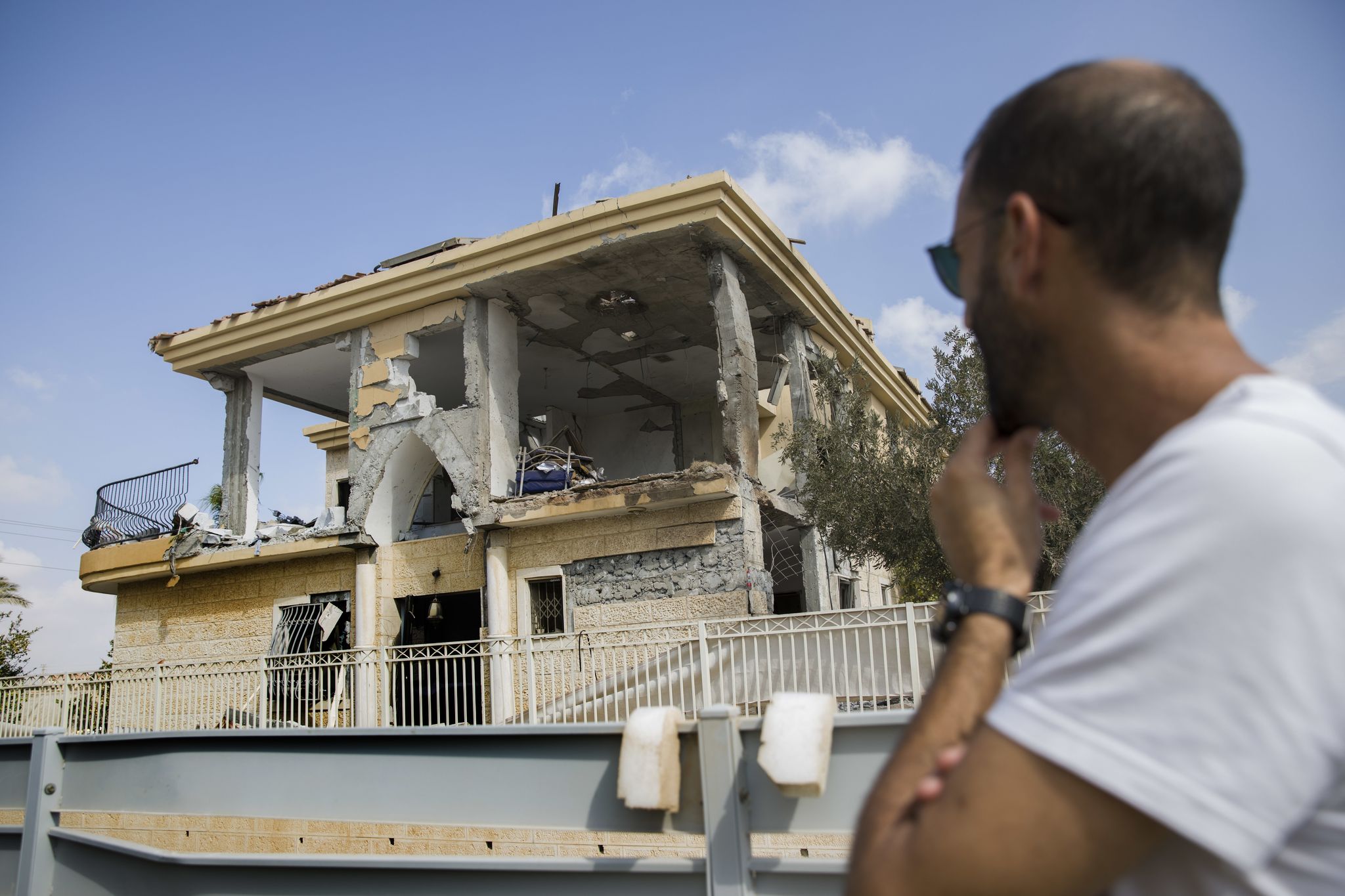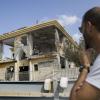
From certain parts of this crowded city, one doesn’t hear rockets like the salvo fired from the Gaza Strip in the twilight hours of Wednesday morning, nor the more than two dozen retaliatory strikes b
GAZA CITY, Gaza — From certain parts of this crowded city, one doesn’t hear rockets like the salvo fired from the Gaza Strip in the twilight hours of Wednesday morning, nor the more than two dozen retaliatory strikes by the Israeli Defense Forces shortly after.
The electricity was out in the hotel across from the sea, a regular occurrence. The street was quiet, and there was no internet service, limiting what residents here can learn of the violence raging just blocks away.
In the early morning hours of Wednesday, Hamas terrorists fired a rocket towards Israel and made a direct hit on a home in the city of Beersheva, gutting the second floor. While there were no injuries, a mother and her children who had hid in their bomb shelter were treated for “shock” — an all-encompassing term for the nervous breakdown that occurs for people in this area experiencing frequent near-death experiences.
In retaliation, Israeli fighter jets targeted at least 12 Hamas military targets in the Tel Al-Hawa neighborhood and Zeitoun, close to Gaza City. The targets included tunnel-digging sites and a factory used for the manufacturing of aerial weaponry, according to the office of the Israeli Defense Forces (IDF) spokesman.
In the south of the Strip, the IDF targeted tunnel digging sites and a maritime terror tunnel shaft in Khan Yunis, and weapon manufacturing factories in Rafah, the Gazan city on the border with Egypt.
The IDF also released video footage Wednesday showing a strike on a terrorist squad that attempted to launch rockets at an Israeli community in the Hof Ashkelon Regional Council, an area that borders Gaza to the north.
In the video, a man in sandals, white pants and a long sleeve shirt is seen setting up a launching pad for a rocket. Another man with blue jeans, a black shirt and a gray vest is seen loading a rocket into a launcher before the entire site explodes with the IDF attack.
“This, sadly, is the normal here in Gaza — and there’s no major impact other than it just keeps the level of anxiety and nervousness very high,” said Matthias Schamle, the director of operations for UNRWA Gaza, the troubled U.N. agency that aids Palestinian refugees, in an interview. As Mr. Schamle spoke in his office in Gaza City, Hamas members milled about outside.
Border closings at Erez, the main crossing point in the north, and Kerem Shalom in the south, can affect the delivery of needed materials from Israel into the Gaza Strip, he said.
“I keep saying, more broadly, that things remain tense here and that we don’t think anyone wants war — on either the Israeli or Palestinian side here — but incidents by hotheads, if I may call it this way, on either side could trigger a war,” he said.
Border closings and the threat of a war could complicate travel around the Gaza Strip, complicating efforts by a reporter to get a full picture of the conflict.
An Israeli press office in Jerusalem confirms the closure of the border but offers no information on when it would be open.
“That’s above my pay grade,” said one IDF spokesman.
Electricity was inconsistent on a three-day visit to the densely populated Palestinian enclave, a reality Gazans have become accustomed to and a challenge by shop, restaurant and cafe owners meet with their own generators.
By mid-morning after the exchange of fire, the streets of Gaza City were packed with cars and people — young men and women heading to the Islamic University of Gaza and Al-Azhar University. An email from the Israeli Government Press Office announced that the Erez crossing had re-opened, but only until 3:30 p.m.
Without electricity, no stoplights work and people tend to drive through intersections with little regard for stopping, making the drive to the crossing before it closed a hazard in itself.
At the Erez crossing, the first checkpoint on the Gaza side is controlled by Hamas.
In October 2017, a little over a year to the day, the Palestinian government in Ramallah signed a reconciliation agreement with Hamas that would slowly transfer governing authority of the Gaza Strip back to the recognized PA government. The first step, in those early days, was for PA security forces to take over the Erez crossing.
But that arrangement quickly broke down, as Hamas officals — distrusting the P.A. — set up their own makeshift checkpoint, complete with desks, laptops, and photocopy machines inside two office trailers.
After a few minutes of conversation, a reporter was allowed to proceed through a gate, but still needed to take a $5 taxi ride half a mile to the Palestinian Authority checkpoint. The second check goes more quickly and border-crossers leave with no stamps in their passport.
The Israeli checkpoint was still another mile to travel. A young Palestinian with a motorcycle and a trailer gave offered a lift. At the Israeli entrance were six heavy metal sliding doors, which remained shut and monitored by a security camera
The hulking concrete of the security fence erected by Israel stretches out into the distance on either side of the crossing terminal. After a few minutes the doors creaked, slid open, and a traveler was back in Israel.






